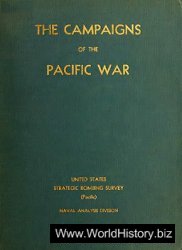As a literary genre, historiography developed a set of formal conventions that, while not iron-clad rules to be applied to every historian in every situation, nonetheless reveal certain patterns, approaches, and/or habits of thought in the ancient historians. For example, debates and speeches are nowhere near as long as what they must have been in the actual situation; nor does the historian catalogue the welter of speakers and their arguments, but rather limits himself usually to two (or at most three) speakers. And although no doubt many actual speakers will not have spoken well or to the point, the speakers in a history generally debate the issue with clarity, directness, and symmetry.
Ancient rhetoric divided speeches into three types: forensic (speeches of accusation or defense in the courtroom); symbouleutic (in which advice is given to individuals or public bodies on which course of action to take); and epideictic (‘‘display’’ rhetoric, in which nothing was to be decided and what mattered was the prowess and ability of the speaker, and which often had as their goal praise and blame). Of these three types the vast majority of historiographical speeches are symbouleutic, as we would expect, since these speeches occur in relationship to actions taken by individuals or groups. Polybius (12.25a.3, cf. 25i.3) speaks of three classes of speeches, addresses to the people (dlmlgoriai), speeches of ambassadors (presbeutikoi logoi), and harangues of generals (parakleseis), and these can all be considered forms of symbouleutic speech.
There are quite a few examples, however, of forensic rhetoric in historiography. The earliest example is that of the Plataeans presenting their case to the Spartans when on trial for their lives, and the Theban response (Thuc. 3.53-67). Other examples include Critias and Theramenes arguing their cases before the Athenian Council (Xen. Hell. 2.3.24-49), M. Manlius’ defense before the dictator Cornelius Cossus (Livy 6.15.1-16.4), and Perseus and Demetrius pleading their cases before their father Philip (Livy 40.8.7-15.16). Curtius Rufus has a particular fondness for this type of speech (6.9.2-10.37; 7.1.18-40; 8.7-19), since it helped him dramatize the growing rift between Alexander and his men (Baynham 1998: 47). In Tacitus, Cremutius Cordus defends himself before the Senate, while delivering a striking call for the historian’s freedom of speech (Ann. 4.34.2-35.4; Moles 1998).
The presence of epideictic oratory was more problematic; history’s association with praise and blame allied it with epideictic’s aims, and at least for some theorists the two genres shared a style (e. g., Cic. Orat. 207). Its close association can also be seen in the fact that Ephorus, Timaeus, and Polybius all discussed the differences between epideictic and history (Pol. 12.28a.8-10), which suggests that many saw the similarities. And Diodorus reveals an epideictic leaning when he identifies speeches of praise and blame ( enkomia kai psogoi, 20.1.2) as one type of historiographical speech. While we do have examples of epideictic speech in historiography (e. g., Thuc. 2.35-46 [Pericles’ Funeral Oration]; Dio 36.27-29 [encomium of Pompey]), it is more common for historians to use elements of epideictic in their speeches, such that even symbou-leutic speeches can display elements and topoi from epideictic (see Burgess 1902: 202ff. for examples).
Much attention has been given recently to the general’s speech before battle (paraklesis/parakletikoi logoi, cohortatio), a type that goes back ultimately to Homer (Keitel 1987). A good deal of scholarly ink has been spilled in the debate over whether generals in antiquity really delivered formal (and at times lengthy) harangues to their troops. There is no doubt that generals addressed their troops before battle (see Caes. BG2.20.1-2 with Erhardt 1995), but this does not mean that the historiographical speech is either what they said or how they said it. It seems most likely that the general rode along the line exhorting his men with words of encouragement, but these are likely to have taken the form of brief exhortations rather than lengthy and carefully constructed formal speeches (cf. Pol. 15.10.1 for both aspects; Plut. Mor. 803A for criticisms of lengthy harangues when men are armed and drawn up for battle). That is to say, the speech before battle is - as with other speeches - a formal convention that serves certain purposes. It allows the audience to understand the issues at stake, the strategy that lies behind the actions, and/or the decisive importance of the moment. When, for example, Scipio tells his men before Zama that the victor in the coming battle will have undisputed sovereignty over the world (Pol. 15.10-11), that can only have been known in hindsight (Walbank 1965: 12), but it marks the moment for the audience as the important turning-point in Rome’s rise to empire. Such speeches have certain recurring and identifiable topoi: necessity, honor, the ease of victory, the support of the gods, the cowardice of one’s opponents, and so forth (Burgess 1902: 212-213; Keitel 1987: 154-160). Readers were on the alert, however, for speeches that ‘‘smelt of the lamp’’ and seemed inappropriate to a military situation or common soldiers. Polybius (12.26a) criticizes Timoleon’s harangue in Timaeus because a general before battle does not try to encourage his men by clever interpretations or learned allusions, and Plutarch dismisses the rhetorical effects and grand periods of the battle speeches of Ephorus, Theopompus, and Anaximenes with a line from Euripides: ‘‘none talks so foolishly when near the steel’’ (Mor. 803B).
We mentioned above the convention that speakers use the dialect and style of the narrator himself (Xenophon’s inclusion of Doric Greek in his Hellenica [e. g., 1.1.23] seems not to have caught on), which means, of course, that Persians and Romans will speak Greek or Greeks and Carthaginians will speak Latin. At the same time, the historian might by subtle means try to individualize his speakers either by the form in which they speak (Tompkins 1972; Francis 1991; Debnar 1996, 2001) or by the language they use (see, e. g., Miller 1968 on Tacitus’ Tiberius), though for the latter they do not imitate the style of a speaker so much as perhaps use a few phrases or idioms which would remind the audience of the speaker (Adams 1973; Briscoe 1981: 40-42). Perhaps this too hearkens back to Homer who, while everywhere using the same epic diction, nonetheless individualizes figures by assigning them distinctive vocabularies (Griffin 1986).
A more complicated convention is the attitude towards predecessors. A historian generally avoided including a speech in his history that was already published in literary form and available to the public (the evidence is convincingly displayed and interpreted by Brock 1995), though one might assign a famous orator a speech on an occasion where there was no surviving speech, as Livy does with Cato and the debate over the Oppian Law (34.2-7). When treating the same time period, the historian might avoid speeches where his predecessor had them and concentrate on those areas where speeches are absent (cf., e. g., Diod. 13.19-33, a debate, not in Thucydides, on the fate of the Athenian prisoners in Sicily), though on what basis he did so cannot be known. The famous example of Tacitus’ version (Ann. 11.24) of Claudius’ speech known from the Lyon inscription (ILS 212) suggests that historians did not feel the same hesitations towards inscriptions as towards published speeches (Brock 1995: 210-212).
When a speech already existed in a predecessor’s work, it seems clear that the ancient historian felt himself bound in some measure by the content. He felt free - indeed he may have felt obligated (below, §4) - to modify it, recast it, ‘‘improve’’ it, and recontextualize it based on his own approach and the needs of his own history. When Livy is following Polybius’ speeches, for example, he rearranges the form (adding exordia, conclusions, and sometimes his own exempla), elaborating on matters only implied in his predecessor’s version, yet at the same time not traveling off in unharnessed flights of fancy. The same is true for Tacitus’ reworking of Claudius, which, while producing a stylistically superior speech, keeps the general point and even some of the arguments used in the inscription. Even Dionysius, the rhetorical historian par excellence, can be seen to respect the tradition in a certain measure (Usher 1982: 835-836). A predecessor seems, therefore, to have kept the historian from composing a wholly free composition. At the same time, it would be naive to suggest that his approach was the same as with deeds, since it seems clear that many historians invented speeches for particular occasions where none existed in his sources. Both in the wholly ‘‘invented’’ speeches (i. e., those for which there was no precedent) and in the level of detail, argument, and adornment, historians were virtually creating a new speech - they were, that is, engaging in literary aemulatio, both with immediate predecessors and with the whole tradition of ancient historiography. Which brings us to our final observations.




 World History
World History









